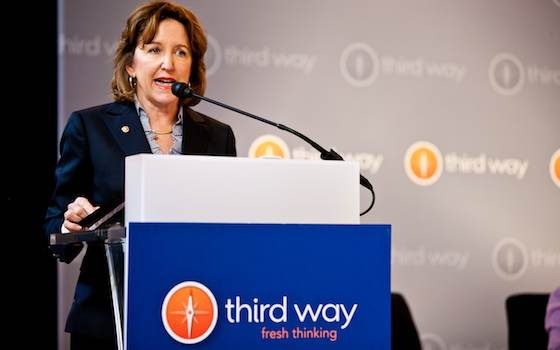- MENU
- HOME
- SEARCH
- WORLD
- MAIN
- AFRICA
- ASIA
- BALKANS
- EUROPE
- LATIN AMERICA
- MIDDLE EAST
- United Kingdom
- United States
- Argentina
- Australia
- Austria
- Benelux
- Brazil
- Canada
- China
- France
- Germany
- Greece
- Hungary
- India
- Indonesia
- Ireland
- Israel
- Italy
- Japan
- Korea
- Mexico
- New Zealand
- Pakistan
- Philippines
- Poland
- Russia
- South Africa
- Spain
- Taiwan
- Turkey
- USA
- BUSINESS
- WEALTH
- STOCKS
- TECH
- HEALTH
- LIFESTYLE
- ENTERTAINMENT
- SPORTS
- RSS
- iHaveNet.com

Republican Divide-And-Conquer Strategy No Longer Applies
by Robert B. Reich
Fifty years ago, when Lyndon Johnson declared war on poverty, the poor were different -- "other," as in Michael Harrington's seminal book of 1962, "The Other America."
That's no longer the case.
After the War on Poverty ended, Republicans told working-class whites that their hard-earned tax dollars were being siphoned off to pay for "welfare queens" (as Ronald Reagan decorously dubbed a black single woman on welfare) and other nefarious loafers. The poor were "them" -- lazy, dependent on government handouts and overwhelmingly black -- in sharp contrast to "us," who were working ever harder, proudly independent (even sending wives and mothers to work in order to prop up family incomes dragged down by shrinking male paychecks) and white.
It was a cunning strategy designed to split the broad coalition that had supported the
The strategy also served to distract attention from why the paychecks of the working class began shrinking in the 1980s -- because of corporations that were busily busting unions, outsourcing abroad and replacing jobs with automated equipment and, subsequently, computers and robotics.
But that divide-and-conquer strategy is no longer convincing because the dividing line between poor and middle class has all but disappeared. "They" are fast becoming "us."
Poverty is now a condition that almost anyone can fall into. In the first two years of this recovery, according to new report from
Three decades of flattening wages and declining economic security have taken a broader toll. Nearly 55 percent of Americans between the ages of 25 and 60 have experienced at least a year in poverty or near poverty (the latter defined as below 150 percent of the poverty line), according to author and
When LBJ declared war on poverty, most of the nation's chronically poor had little or no connection to the labor force, while most working-class Americans had full-time jobs.
This distinction has broken down, too. Now, a significant percentage of the poor are working but not earning enough to get themselves and their families out of poverty. And a growing portion of the middle class finds itself in the same place -- often in part-time or temporary positions, or in contract work.
Economic insecurity is endemic. Working-class whites who used to be cushioned against the vagaries of the market are now fully exposed to them. Trade unions that once bargained on behalf of employees and protected their contractual rights have withered. Informal expectations of lifelong employment with a single company are gone. Company loyalty has become a bad joke.
Financial markets are now calling the shots -- forcing companies to suddenly uproot, sell out to other companies, transfer whole divisions abroad, liquidate unprofitable units, or adopt new software that suddenly renders old skills obsolete.
Because money moves at the speed of an electronic impulse while human beings move at the speed of human beings, the humans -- most of them hourly workers but many white collar as well -- have been getting shafted.
This means sudden and unexpected poverty has become a real possibility for almost everyone these days. And there's little margin of safety. With the real median household income continuing to drop, 65 percent of working families are living from paycheck to paycheck.
Race is no longer a dividing line, either. According to
This new face of poverty -- a face that's both poor, near-poor and precarious working middle class, and that's simultaneously black, Latino and white -- renders the divide-and-conquer strategy obsolete. Most people are now on the same losing side of the divide. Since the start of the recovery, 95 percent of the economy's gains have gone to the top 1 percent.
Which means Republican opposition to extended unemployment insurance, food stamps, jobs programs, expanded
Just look at North Carolina, a bellwether state, where Democratic Sen. Kay Hagan, up for re-election, is doing well by attacking Republicans back home as "irresponsible and cold-hearted" for slashing unemployment benefits and social services. The state
The new economy has been especially harsh for the bottom two-thirds of Americans. It's not hard to imagine a new political coalition of America's poor and working middle class, bent not only on repairing the nation's frayed safety nets but also on getting a fair share of the economy's gains.
Receive our political analysis by email by subscribing here
AMERICAN POLITICS
WORLD | AFRICA | ASIA | EUROPE | LATIN AMERICA | MIDDLE EAST | UNITED STATES | ECONOMICS | EDUCATION | ENVIRONMENT | FOREIGN POLICY | POLITICS
Article: Copyright ©, Tribune Content Agency.
Republican Divide-And-Conquer Strategy No Longer Applies